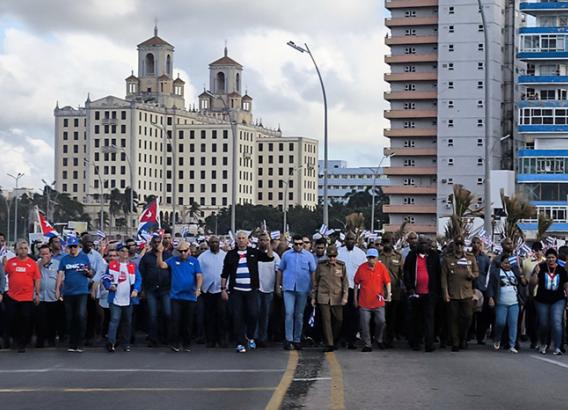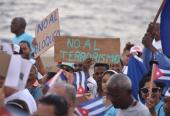Cuban President Tours Communities Impacted by Hurricane Melissa
especiales

Miguel Díaz-Canel, President of the National Defense Council, began his tour of territories impacted by Hurricane Melissa today in Granma province.
According to a post by the Presidency on X, the leader visited the community of El Recreo in the municipality of Cauto Cristo, one of the areas most affected by severe flooding—a situation that, according to residents themselves, is unprecedented.
The President was informed that out of a total of 20,570 inhabitants in the municipality, 14,432 had to be evacuated.
During the dialogue with residents, the President inquired about the most urgent needs of the community, asked about the number of damaged homes and those still inaccessible, and was briefed on the care being provided to the evacuees.
He confirmed that the economic losses there are substantial. Crops, the main sustenance for many families, were wiped out by the waters, leaving plantings of bell peppers, squash, corn, and sweet potatoes completely destroyed.
Faced with the difficult situation, the Head of State emphasized the protocols that must be followed to guarantee the quality of water and food for the residents once they can return to their homes.
Upon departure, Díaz-Canel conveyed a message to the men, fathers of El Recreo, who were watching over their homes from the highway: "We have no other choice but to recover."
He told the affected individuals, "A hug, no one here will be left helpless."
Assessment of Agricultural and Infrastructure Damage
The President then proceeded to the San Marcos settlement, home to part of the Carlos Bastidas Azcuy Cooperative.
With sorrow, producers and neighbors described to the President how Hurricane Melissa and the subsequent flooding caused the loss of months of work in plantations of cassava, sweet potatoes, and plantains, and especially of a road that had been constructed just last year.
Another point on his tour was the Camilo Cienfuegos community in Río Cauto, where more than a thousand people had to be evacuated due to the floods.
There, he conversed with neighbors, who spoke of losses including appliances, furniture, mattresses, and personal items.
Residents of Bayamo recounted the bitter experience they endured when the flooding exceeded all predictions, forcing urgent evacuations during the night and early morning.
The President called for an assessment of what happened and an update of disaster response plans.
Critical Role of Infrastructure and Evacuation Centers
He also visited the Cauto del Paso dam, the largest hydraulic infrastructure in the province, also known as the "key to the Cauto," which is currently undergoing maintenance.
In the wake of Hurricane Melissa, the dam released over one billion cubic meters of water—three times its capacity—preventing the flooding from the storm's impact from being even greater.
Finally, the President went to the evacuation center set up at the Batalla de Guisa school, which sheltered over a thousand people at its peak and, as of this Tuesday, was still housing approximately 600 evacuees.
He spoke with them, toured the facility, inquired about food, medical care, and childcare, and stressed that the return to communities must only happen once the proper conditions are in place.














Add new comment